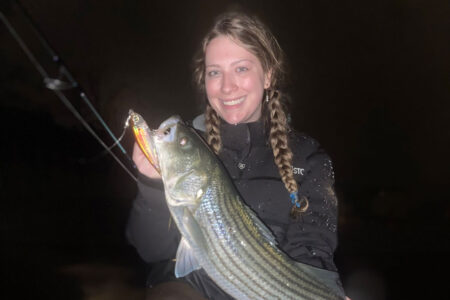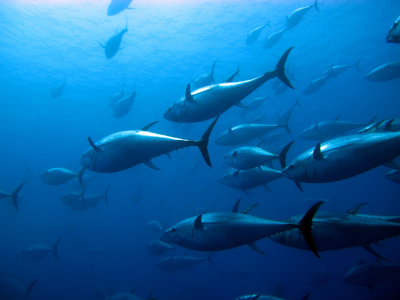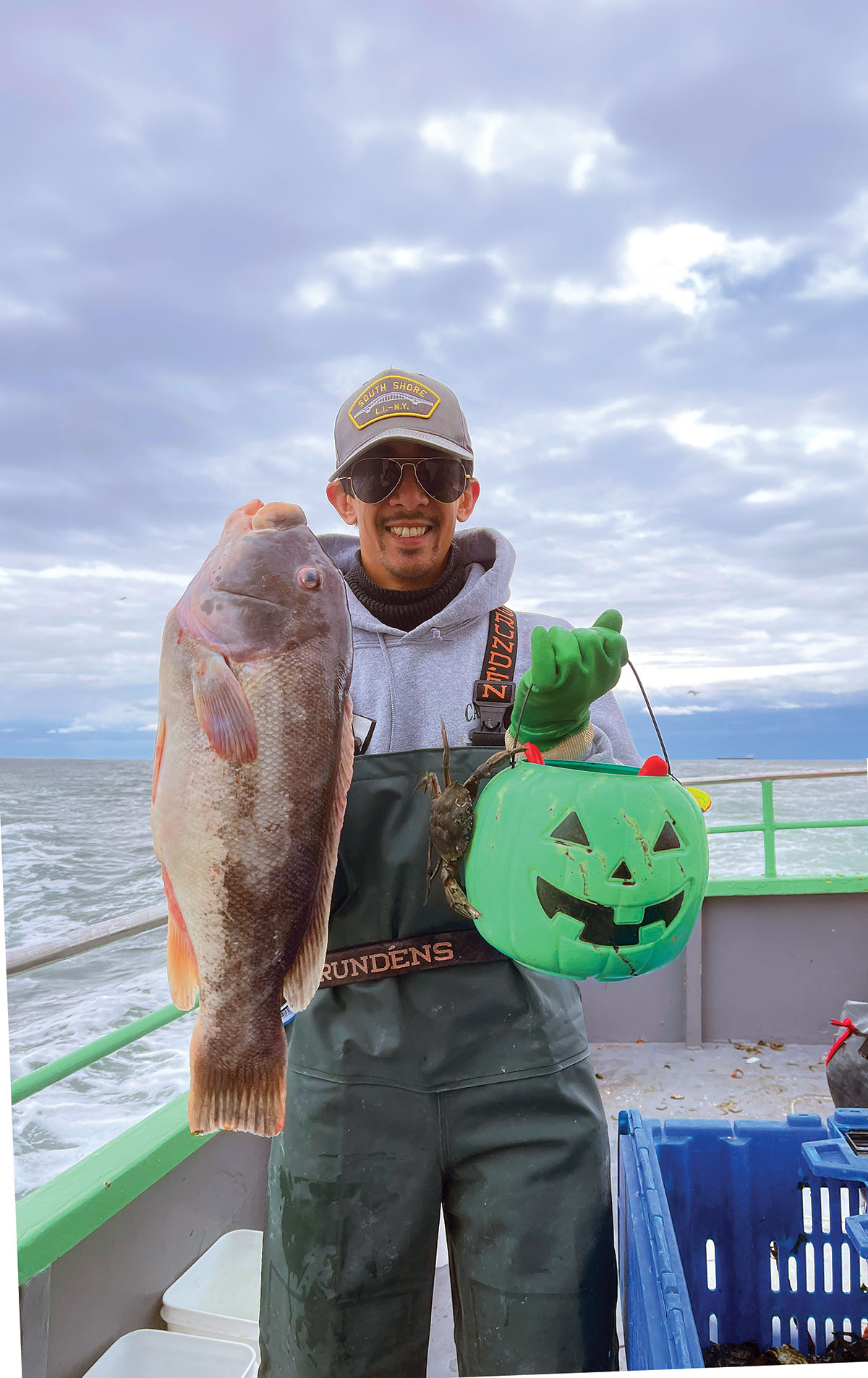
There are few emotions more gratifying than ‘progress’. Making the most of a harvest, tying the cleanest knot, or placing the perfect cast, is satisfying. Plain and simple. It’s a promise people can make to themselves.
Each season brings in room for improvement, and each fishing trip an opportunity to execute what skills we’ve learned. I made good on that promise this past Halloween during a party boat blackfish trip, on the Captain Al.
Preparation
Preparation began the evening before the trip. After work, I grabbed an empty bucket, a pair of gloves, and the headlamp I keep in my glovebox. While making the drive to the rocky shoreline, I thought to myself “I really ought to wash these things.” The rubberized gloves were crusted in salt and muck, and the stained elastic cotton on the cuff had been stretched out. I slipped them on, indifferent to the smell.
Flipping rocks in the bright light of the waning gibbous moon, it seemed I didn’t need the headlamp. While stumbling through ingots of concrete, I concentrated my efforts on the flatter, undisturbed rubble that seemed to produce better quality crabs. Many areas were already picked clean thanks to other proactive toggers. I wrapped up in an hour with enough for the trip. The tide began to rise.
Craggy shorelines stood out in stark contrast to a sleek, glass office. The mechanical whirr of a standing desk, the clacking keystrokes of a laptop, a printer’s hum dimmed out. They were replaced by lapping waves, the hush of breezes woven through the dune grass, and the anticipation of a banner morning. I had a reservation on the Captain Al, a headboat that runs out of Point Lookout, NY.
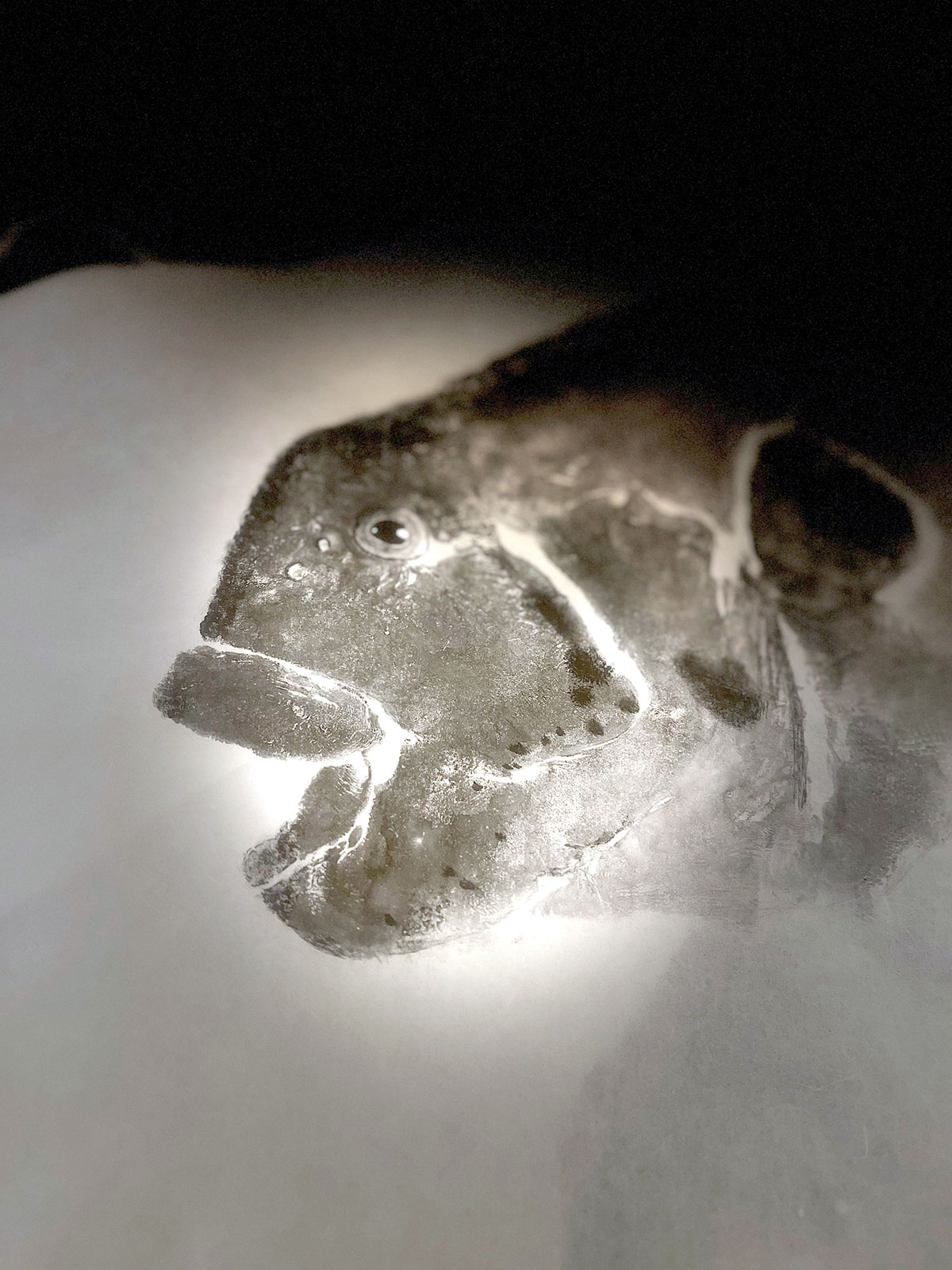
Stepping Aboard
I parked and gathered my gear; with rods, cooler and tackle bag in hand, and hopped aboard. Captain Tom and Keith, the mate, greeted me as soon as I boarded. It was already busy, with passengers tying rigs and swapping tales, or inefficaciously snoozing until the engines rumbled. Rods intermittently lined the rail.
I set up at the port bow. By the time I arrived, the stern and its corners had been claimed by more industrious anglers; the early bird gets the worm. I recognized a few people. Some were regulars, others I remembered from different boats. A man from the James Joseph. Another from the Super Hawk. It was always nice seeing familiar faces. After exchanging pleasantries, I looked over my tackle and equipment.
Drag set? Appropriately. Hooks? Snelled. Lines and knots? Un-frayed and snug. All set to go!
The boat made its slow pilgrimage through the inlet, passing the jetty on the port side. Our surf-bound counterparts dotted the artificially bouldered protrusion into the brine, casting lines in search of a bite, or perhaps peace of mind. My attention shifted to the day ahead. I wasn’t sure of our destination, but as always, I trusted the captain and crew to give it their best. It was said that Captain Tom had the accuracy to drop his anchors on a dime. For that, the onus was on me to also give my best.

The Drop
I tossed a jig with a trailer hook attached to the eye, a “training wheel”. Captain Tom previously posted that jigs had produced well over the last week. I’m not the best fisherman, and any advice on how to be more productive garnered my attention. My outfit consisted of 15-pound test line spooled on a 2500 class reel, with a 25-pound fluorocarbon leader. The rod was short, 6-1/2-foot with a very parabolic bend. It was too soft for my liking but was the only spinning rod suited for this fishing I had at the time. It crossed my mind that I may have brought a proverbial knife to a gun fight.
The jig slowly descended, hooks tipped with the bait I scrabbled for in the rocks. Once the line looked and felt slack, I knew I had reached the bottom. The jig settled into the craggy structure, and I second guessed the strength of my line. The current dragged it back, and the jig seemed to be hung. “Shoot, I may lose it. There goes a few dollars.” Such were the perils of blackfishing. Then again, I’ve heard if I was not losing tackle, I was probably not fishing in the right spot.
I reeled in the slack, the line tightened, and the rod tip began to bend toward the water. Something had been hooked, and whatever it was, didn’t realize the danger just yet. I lifted the rod high. Its softness and short length hindered the set, but four or five quick turns of the handle took out the remaining slack, and I set it again. Now it knew something was up.
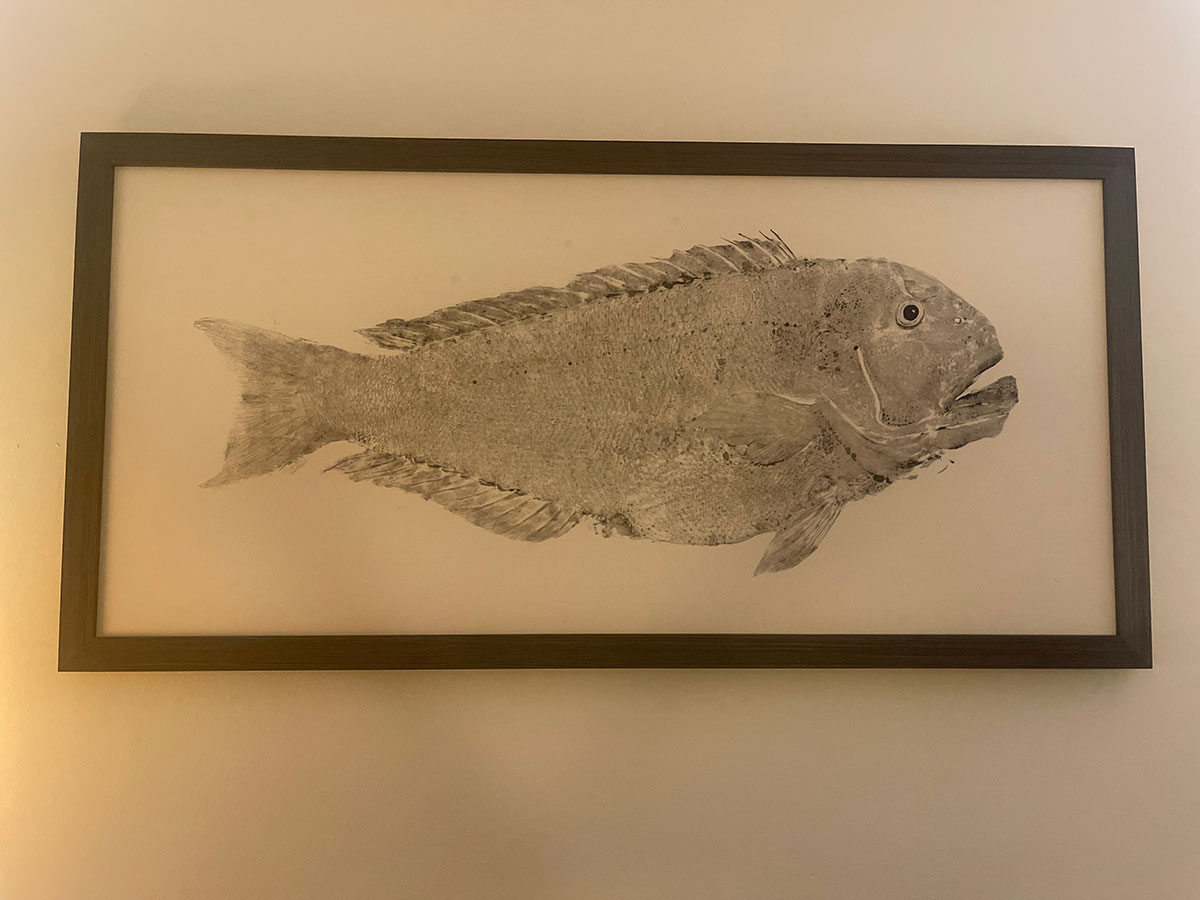
The Skirmish
There was weight, and it began to peel drag. Captain Tom observed from the top deck and shouted “Get it out of there, quick!” I tucked the rod butt under my arm, took a couple nimble turns, and slowed the retrieve, once I felt it was out of the structure. If possible, I wanted to reduce the barotrauma. The quality of the reel’s drag system became evident. The softness of the rod transformed into an asset at this point in the bout, acting as a shock absorber. Perhaps the rod was the right tool for the job.
When I thought all was clear, a forward angler’s line wrapped around my main line. The slightest nick or chafe compounded with a strong run or a high-crested wave could break the only link separating me and what was below. The mate was attentively nearby. He gave instruction to my neighbor, deftly untangled the strands, and I continued the skirmish. A final run was the last-ditch effort of this fish to free itself, and a large grayish mass slowly circled out of the still-warm waters of the Atlantic. It came up, head beneath water, broadside to the green steel hull. “Color!” I sputtered out. “I see it.” confirmed the mate.
The mate swiftly netted the healthy male tautog and hauled it up and over the gunnel. The protruding white chin and belly were the tell-tale signs of its masculinity. Captain Tom exclaimed “Ho! Look at that! Nice fish Andrew. Get a picture. Walk it around the boat!”
The stinger hook was lodged between jagged, blunt teeth. I wondered what that would feel like. Like a popcorn kernel between your teeth? Or like a trip to the dentist without topical anesthetics? It certainly looked as if it could use braces. I didn’t dwell on the thought for much longer. I picked up the wreck prize, and a photo was taken. The crowd was excited for me, and the happening also inspired the idea that their own figurative number was due to be called. We all fished hard.
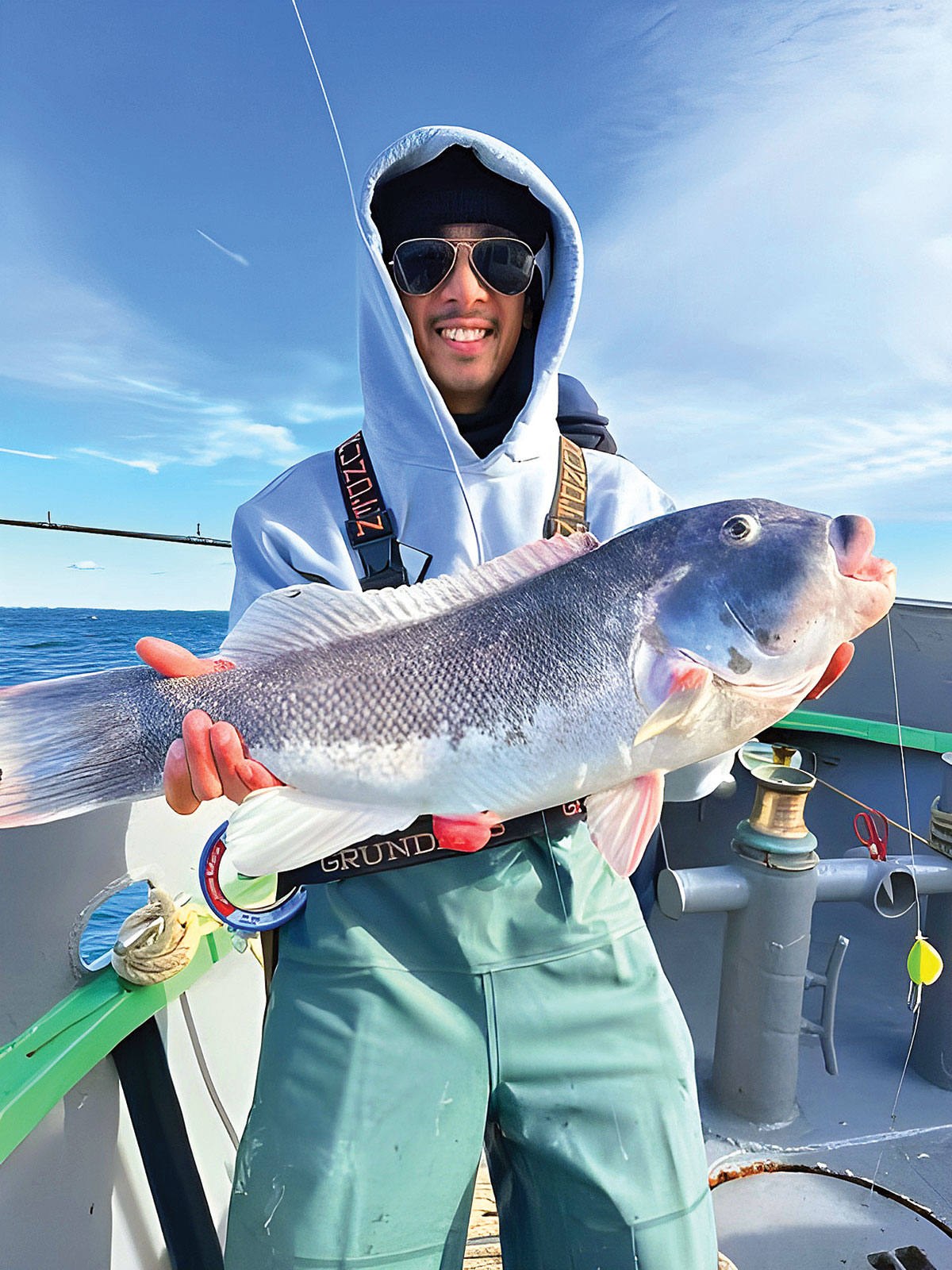
Proper Handling
Part of this promise I made to myself included caring for the catch. I placed the fish in a bucket changing the water every 30 minutes, and transferred it into a larger container with circulating sea water. That kept it alive for a while until we headed back. Then, the pool winning fish became faint. I bled it with a discreet incision through its gills. The vitality trickled out and the once-tenacious strokes of that broom tail became lethargic. Exsanguination and better-quality meat went hand in hand, as blood spoils faster than muscle. An old Coleman cooler filled with ice and sea water became a temporary briny casket. Before I headed back to my car, I tipped the mates. They took care of me, and their friendly attentiveness was top notch. Always tip the mates.
This was my largest blackfish to date. Certainly, veteran anglers would not have batted an eye to a fish of this caliber. Some see double-digits on a regular basis. To me it was the tangible reward from the preparation of the night passed.
The next morning, I took a trip to Freeport Bait and Tackle and asked John, its proprietor, if he could weigh the blackfish. Onto the scale it went. The number settled on 8.55 pounds. I changed the pinkish water with fresh sea water and added more ice. The rigor mortised fish went back with me, along with an entry slip for the Dream Boat Challenge.

Honoring The Catch
When I arrived back at home, I cleared a space on a desk and unfurled a special roll of paper and a container with a non-toxic, pine soot ink. Gyotaku, a traditional Japanese art where a fish is printed with ink on paper, has been an activity I’ve pursued for a few years. This was a way to manifest a memory into a tangible effigy. Another artist proposed a hypothetical: Which would you find more memorable in a photo album – a faded photo of your child, or your child’s archival-inked footprint? I’d prefer both.
I straightened the ice cold fish, positioned the fins, meticulously dabbed ink between the scales, and precisely placed rice paper on top. I had my print. The non-toxic ink was washed off, and my fish was destined for the fillet board. A keen-edged Dexter 1376N made short work of a long day. I preferred whole fish because of the opportunities it provides. I also believed that, without fish to carve, my proficiency to one day yield a flawless fillet would be unattainable.
The rack and bones simmered for hours with clean water, onions, fennel, carrots, celery, herbs, and spices. Gastronomic alchemy. The firm flesh was diced into cubes, and added to the pot. This five hour New England style chowder fed my fiancé, my best friend, his wife and me for several meals. I debated where to hang the print in our apartment before dozing off.
I submitted the entry for the 2024 Dream Boat Challenge and connected with editor Dave Anderson who graciously extended an opportunity to draft an article recounting the day and the utilization an angler can make from a catch.
That one fish provided a whole lot of substance. Meals for the table, and nourishment for the soul. Art for aesthetics, and for remembrance of that promise to make the most out of something. Perhaps that promise was made to both myself and the fish, like an unspoken understanding.
At the very least, it is part of our collective responsibility to honor the catches we harvest and the resources around us. Celebrate the well-earned accomplishments, share them with loved ones, and manufacture memories out of each trip.

